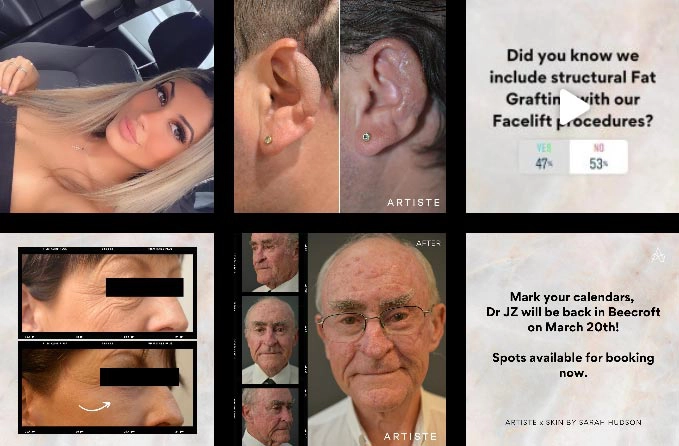4 Possible Risks Of Combining Cosmetic Surgeries
Model featured in photography
Combining plastic surgery procedures involves undergoing multiple treatments during a single operative session. While this approach can offer certain benefits, it may also come with additional considerations that patients should be aware of. This blog post aims to provide general information about the possible risks associated with combining cosmetic procedures, without making claims about specific outcomes or results.
Extended Surgery Duration
One of the primary concerns with combined plastic surgeries is the increased time spent under anesthesia. Longer surgeries are associated with a higher risk of complications. A study published in the journal Aesthetic Surgery Journal found that each hour increase in surgery duration was associated with a 21% rise in the odds of morbidity. It’s crucial to discuss the expected duration of the procedure with a qualified healthcare professional, as operative time should be a factor in surgical decision-making.
Recovery Complexity
Multiple procedures often result in a more complex recovery process. According to the American Society of Plastic Surgeons, patients undergoing multiple procedures at once may experience more intense pain and a greater need for post-operative care.This extended recovery period can be demanding both physically and emotionally, requiring careful attention to each individual surgical site.
As healing can take longer and involve more intense discomfort, it’s essential that patients have a strong support system. Additionally, the complexity of managing recovery from multiple procedures at the same time increases the risk of complications, making follow-up care and close monitoring critical.
Infection Risk
Any surgical procedure carries a risk of infection. When multiple procedures are combined, there may be an increased number of incision sites, potentially elevating the risk of infection. According to Healthline, infections are among the most common complications in plastic surgery, with symptoms such as redness, swelling, and discharge potentially indicating a problem. Additionally, managing multiple incision sites can be more challenging for patients, requiring meticulous post-operative care to ensure proper hygiene and healing.
Blood Loss and Clotting Concerns
Combined procedures may involve more extensive tissue manipulation, which could potentially lead to increased blood loss. A study published in the Aesthetic Surgery Journal found that for every 100 milliliters of aspirate during liposuction, the average total body blood loss is 37 mL for females and 23 mL for males when not using tumescent solution.
Importance of Individual Assessment
It’s crucial to understand that every patient is unique. The risks and suitability of combined procedures can vary significantly based on individual health factors, the specific procedures being considered, and other personal circumstances.
Given the complexity of combined cosmetic procedures, it is essential to have a thorough consultation with a qualified healthcare professional. Obtaining a GP referral and undergoing BDD screening are essential before proceeding to any cosmetic surgery.
If you want to learn more information about plastic surgery, including what plastic surgeries can be combined to suit your needs, their associated risks, and other important details, reach out to our Specialist Plastic Surgeon, Dr Jack Zoumaras. He can provide personalised advice based on your individual health status, desired outcomes, and potential risks. Book a consultation today.
Disclaimer: At Artiste Plastic Surgery, our Plastic Surgeons led by Dr Jack Zoumaras have been trained to the highest possible degree. All surgery has risks and it is always advised to get a second opinion. Risks are very real and we cannot guarantee any result. Results are illustrated as a guide only. All risks are managed and any need for revision surgery or complications (1-5%) can be managed by our specialist plastic surgeons.
Any statements on how you will feel is based on Level V Evidence:
Level V: How you will feel after plastic surgery varies between individuals, depending on psychological and physical factors. Our internal research is based on how patients in our practice feel after surgery.
The blogs are not a substitute for a medical consultation and do not form as part of the doctor to patient relationship.
SHARE THIS ARTICLE
Jul01
Facelift Recovery Tips: What Speeds Up Healing and What to Avoid
Disclaimer: At Artiste Plastic Surgery, our Plastic Surgeons led by Dr Jack Zoumaras have been trained to the highest possible degree. All surgery has risks and it is always advised ...
Jul01
How to Prepare for Facelift Surgery: What to Do Before Your Big Day
Disclaimer: At Artiste Plastic Surgery, our Plastic Surgeons led by Dr Jack Zoumaras have been trained to the highest possible degree. All surgery has risks and it is always advised ...
ABOUT ARTISTE
Artiste Plastic Surgery is an Award Winning Specialist Plastic Surgery practice led by internationally trained Dr. Jack Zoumaras, Plastic Surgeon and Peer Reviewed Face Surgeon
Artiste offers the latest Cosmetic Surgical Procedures of the Face, Breast and Body, inspired from leading centres around the world.
STAY IN THE LOOP
Enter your email address below to receive updates on new articles and VIP access to promotions and special offers.
FOLLOW US ON INSTAGRAM










